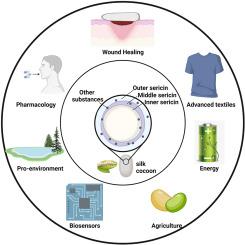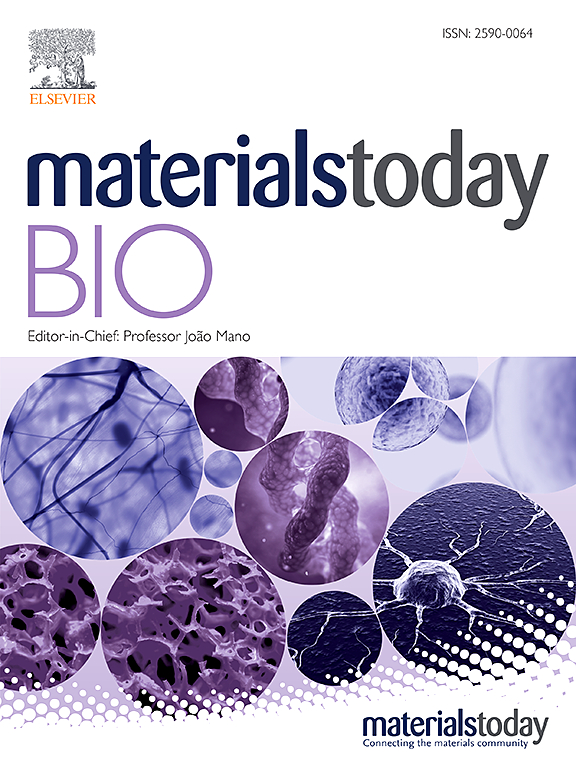蚕丝纤维上的丝胶,是脱胶废物还是未来材料?
IF 8.7
1区 医学
Q1 ENGINEERING, BIOMEDICAL
引用次数: 0
摘要
丝绸是一种纤维状生物聚合物,在纺织业中已有数百年的历史。这种纤维由两种不同的蛋白质组成:纤维蛋白和丝胶蛋白,其中丝胶蛋白约占蚕丝质量的 20-30%。丝胶蛋白(SSER)以前被认为是蚕丝纤维素提取过程中的一种废弃副产品。最近,SSER 因其广泛的生物和药理特性而引起了科学界的极大兴趣。这些特性包括抗氧化作用、生物相容性、低免疫原性、可控生物降解性以及诱导细胞增殖的能力。本综述涵盖了对这种新兴材料各个方面的研究,即其一般形态、特定结构、分子量、不同层的特征以及基因序列。文章还讨论了不同提取方法的影响以及基于分子量提取的 SSER 的应用。此外,丝胶氨基酸中的特征官能团促进了其在再生医学、伤口愈合、药物输送、纺织、环境和能源等领域的应用,其形式多种多样,如水凝胶、薄膜、支架和导管等。基于 SSER 的材料为未来几十年的多功能应用提供了巨大潜力,展示了各种功能用途的适应性和未来技术进步的前景。本文章由计算机程序翻译,如有差异,请以英文原文为准。

Sericin coats of silk fibres, a degumming waste or future material?
Silk is a fibrous biopolymer with a recorded history in the textile industries for centuries. This fibre is constituted of two different proteins: fibroin and sericin, of which the latter accounting for approximately 20–30 % of the silk mass. Silk sericin (SSER) was previously considered as a waste by-product in silk fibroin extraction. SSER has recently garnered significant scientific interest due to its extensive biological and pharmacological properties. These include antioxidant effects, biocompatibility, low immunogenicity, controlled biodegradability, and the ability to induce cell proliferation. This review covers studies about various aspects of this emerging material, namely, its general morphology, specific structure, molecular weight, features of different layers, and gene sequences. The impact of different extraction methods and the application of extracted SSER based on molecular weight are discussed. Additionally, the characteristic functional groups in the amino acids of sericin facilitate its applications in regenerative medicine, wound healing, drug delivery, textile, environment, and energy, in various forms like hydrogels, films, scaffolds, and conduits. SSER-based materials offer great potentials for multi-functional applications in the upcoming decades, showcasing adaptability for various functional uses and promising future technological advancements.
求助全文
通过发布文献求助,成功后即可免费获取论文全文。
去求助
来源期刊

Materials Today Bio
Multiple-
CiteScore
8.30
自引率
4.90%
发文量
303
审稿时长
30 days
期刊介绍:
Materials Today Bio is a multidisciplinary journal that specializes in the intersection between biology and materials science, chemistry, physics, engineering, and medicine. It covers various aspects such as the design and assembly of new structures, their interaction with biological systems, functionalization, bioimaging, therapies, and diagnostics in healthcare. The journal aims to showcase the most significant advancements and discoveries in this field. As part of the Materials Today family, Materials Today Bio provides rigorous peer review, quick decision-making, and high visibility for authors. It is indexed in Scopus, PubMed Central, Emerging Sources, Citation Index (ESCI), and Directory of Open Access Journals (DOAJ).
 求助内容:
求助内容: 应助结果提醒方式:
应助结果提醒方式:


